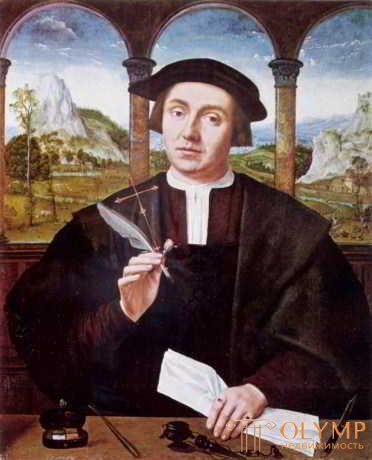
1. The development of Dutch painting
Painting and in the XVI century remained a favorite art of Flanders and Holland. If the Dutch art of this time, despite the majestic, calm and mature flourishing of the XV century and even more significant and free, further development in the XVII century, is still a transition art, looking for ways, the reason for this, no matter what they say, lies mainly in the powerful but uneven transition to the north of the southern language of forms, processing of which by the leading Dutch painters of the 16th century succeeded in the glance only of contemporaries, but not in the look of posterity. That the Dutch artists of this time were not content, like most Germans, to wander to Northern Italy, but were sent directly to Rome, whose refined style contradicted the northern nature, became fatal for her. Next to the "Roman" direction, which reached its apogee in 1572 at the base of the Antwerp fraternity of the novelists, the national trend in the field of painting never dried up. Decades of Italian dominance followed rare national undertakings in which the movement of the 15th century found continuation and color. In the second half of the century, when this “Italianism” quickly froze in an academic manner, a strong national resistance immediately appeared against it, indicating new ways for painting. If Germany had previously led the way in the independent development of the genre and landscape in graphics, now these industries have become independent branches of easel painting in Dutch hands. Then followed a portrait-group and an architectural motive in painting. Opened new worlds. However, between Flanders and Holland during the entire XVI century there was such a lively exchange of painters that the origin of the masters meant less than the tradition they followed. In the first half of the XVI century, we will have to observe the development of Dutch painting in its various main centers; in the second, it would be more instructive to trace the development of individual industries.
In the Netherlands, easel painting now dominated. Reproduction arts, woodcutting and copperwork, are influenced mainly by the high German graphics. Despite the importance of Luke of Leiden, an engraver painter with an independent fantasy, despite the merits of such masters as Hieronymus Cock, Hieronymus Viryx and Philip Halle for spreading the discoveries of their countrymen and despite the high painterly fineness that copper engraving acquired in the eclectic hands of Gendrik Holzius (1558–1616) and his students, copper engraving and wood engraving do not play such an important role in the Netherlands as in Germany. Book miniature and in the Netherlands lived only remnants of the former heyday, the fruits of which we can point out only on occasion. On the contrary, it was here that wall painting more resolutely than anywhere else gave up its rights and obligations, on the one hand, with carpet fabric, the history of which was written by Giffre, Müntz and Penshar, and on the other hand painting on glass studied by Levy, mainly in Belgium. Carpet weaving cannot be excluded from the great art of the Dutch of the XVI century painted on the plane. The weaving works of the rest of Europe turn pale before the Dutch weaving of carpets; in the Netherlands, Brussels has now undoubtedly gained leading role in this art. Indeed, even Leo X ordered the manufacture of famous Raphael carpets in the workshop of Peter van Aalst in Brussels in 1515–1519; A number of other well-known series of carpets, painted by Italians, preserved in palaces, churches and collections, of undoubtedly of Brussels origin. Let's name 22 carpets with Scipio in Gard-Meebl in Paris, 10 tapestries with the love story Vertumn and Pomona in the Madrid Palace and 26 woven cows from the history of Psyche in the palace in Fontainebleau. On the Netherlands cardboards by Barend van Orley (died in 1542) and Jan Cornelis Vermeuien (1500–1559), Maximilian’s hunt in Fontaineauau and the conquest of Tunis in the Madrid Palace were also woven. This branch of art has now forgotten its former strict style, with limited space, for a more picturesque, and its depth of style for the luxury of brighter colors. At the same time, painting on glass in the Netherlands, as elsewhere, went in the same more plastic, with brighter colors direction; and it was here that she for the first time widely and luxuriously unfolded her magnificence. Such a series of windows, as in the church of St.. Valtrudy in Mons (1520), in the church of Sts. Jacob in Luttih (1520–1540) and the church of Sts. Catherine in Googstraathen (1520–1550), whose paintings in architectural motifs are still imbued with Gothic echoes, as well as large series entirely dressed in Renaissance forms, such as the luxurious windows of the Cathedral in Brussels, partly going back to Orlais (1538), and the large church in Goode , works by Wooter and Dirk Crabet (1555–1577), by Lambert van Norte (up to 1603), are among the greatest works of painting on glass of the XVI century. If you even agree that the ancient mosaic glass painting was more stylish than the new-fashioned pictorial, you still can not help but be impressed by the calm, with a small number of colors of the harmony of large windows of this direction.
A special kind of monumental painting in one part of Holland is large, painted in wood for ceiling arches, which in the polygons of the church choir represent the Temperate Judgment and other biblical events as parallels of the Old Testament to the New. Pictures of this genus, published and assessed by Gustav van Kalken and Jan Six, are again open in the churches in Enkguizen (1484), Nardin (1518), Alkmara (1519), Varmguizene (1525) and in the church of Sts. Agnes in Utrecht (1516).
The oldest information about the Dutch painting of the XVI century is in the description of the Netherlands Guicciardini, in the epigrams to the paintings of Lampsonius and in the famous book on painters by Karel van Mander with Giymans' notes in French and Hans Fleurk in German. From the general works one should point out the works of Vaagen, Snaaz, Mihiel, A.I. Waters and Torel, as well as the works of Riegel and B. Riel. Based on Sheyblera, and the author of this book thirty years ago, he worked on the study of Dutch painting of this period. Since then, the results have been partly supplemented, partly confirmed by new individual searches of Scheubler, Giymans, Gulin (van Loo) and Friedlander. The history of antwerp painting was written by Max Rooses and F. I. van den Branden; more than thirty years ago, Van Evan laid the foundation for the history of Leuvensk art, Neeffs for Melln, Gelbig for the Lyuttikh, for van Gaerlemann for Gaarlem.
2. Attractiveness of the Netherlands for artists
Already in the first quarter of the XVI century, artists from the most diverse Flemish, Dutch and Walloon cities flocked to Antwerp. In the lists of masters and students of the Antwerp painters guild, published by Rombouts and van Lerius, among the thousands of unknown names in front of us is most of the famous Dutch painters of this century. They are led by Quentin Massys the Elder, the great Flemish master, who, as is now universally recognized, was born in 1466 in Leuven from parents of Antwerp, and in 1491 became a master of the guild of St. Luke in Antwerp, where he died in 1530. Our information about this master in recent times has increased thanks to Giyumans, Carl Justi, Gluck, Cohen and de Boscher. Cohenn showed that Quentin in Leuven was brought up on the works of the strict Old Flemish Dirk Bouts and apparently joined with his son Albrecht Bouts (approximately 1461-1549), whom Van Even, Gulin and others see in the master of the Assumption of the Virgin of the Brussels Museum. Whether Quentin was in Italy has not been proved and does not follow with necessity from his style, which could develop on local soil to a great freedom, breadth and inspiration, characteristic of the spirit of that time, both in the north and in the south. Even the echoes of the Renaissance in the structure of his later paintings and costumes, full of spirits, the breadth of his landscapes with luxurious buildings on mountain forest slopes and the tenderness of his confident body styling, which, however, has nothing in common with sfumato by Leonardo da Vinci, do not convince us that he should have known the works of this master. Yet he did not remain at all cold to the movement of the Renaissance and boldly and strongly led forward the Flemish painting in the wake of his time. Of course, he does not have the diversity, thoroughness and spiritual depth of Dürer, but he surpasses his painterly brush power. The Quentin form language, generally northern in essence and not free from roughness and angularity in its dependence on other styles, manifests itself in some independent-type heads with a high forehead, short chin and a small, slightly protruding mouth. His colors are juicy, bright and sparkling, in the tone of his body they turn to cold monochrome, and in clothes to that iridescent shading with different colors, which Dürer definitely rejected. His letter, with all its might, comes to diligently finishing details, such as transparent snowflakes and flowing individual hairs. The richness of imagination is not typical of Quinten, but he is able to impart an extremely intimate spiritual life to quiet actions. The main groups of his paintings usually occupy foreground full width; the bright landscape constitutes a majestic transition from the middle plan to the back.
Life-size busty images of the Savior and His Mother in Antwerp, written with love, but dryly processed, undoubtedly date back to the 15th century. Their repetitions in London are gold instead of a dark green background. Four large altarpieces give an idea of Quentin's mature power at the beginning of a new century. The eldest are the doors of the carved altar in San Salvador in Valladolid, which emerged in 1503. They depict the Adoration of the Shepherds and the Magi. The evidence cited by Carl Justy makes them recognize works that are very typical of Quentin. The famous, easily accessible, large and best works of Quinten are the altar of St. Anne of the Brussels Museum, shining with serene beauty, from St. Originally in a dreamy mood of the middle part and finished in 1511, the altar an. St. John of Antwerp Museum, the middle part of which in the broad, powerful and passionate picture represents the Crying over the Body of Christ. Altar doors Annas contain events from the life of Joachim and Anna, written widely and vitally with a beautiful transmission of spiritual life. The doors of the John's altar have on their inner sides the torment of two John, and their figures on the outer sides according to the old custom are presented in the form of statues written in gray tones against a gray background. According to Gulin, Quentin's large triptych with the Crucifixion in the collection of Mayer van den Bergt in Antwerp is the fourth in a row with these works. From among the small religious images, several paintings join them, formerly considered the works of Patinir’s “landscape painter”, and above all the beautiful Crucifixes with Magdalen, the National Gallery in London and the Liechtenstein Gallery in Vienna, hugging the foot of the cross. These pictures are adjoined by a wonderful small “Crying over the Body of Christ” in the Louvre, which skillfully conveys the rigor of the Holy Body and the Tribulation of Mary and John, not all, however, recognized as Quinten's work. Indeed, the luxurious, solemnly seated Madonnas in Brussels and in Berlin and the striking images of Magdalen in Berlin and Antwerp are genuine.
Quentin Mussys was also a finisher of the Dutch genre of life with half-figures in full size. Most of the surviving paintings of this kind, with business people in offices, are, of course, only works of the workshop. The autographic work, judging by the confident, completed letter, is “The Weigher of Gold and His Wife” in the Louvre, “The Unequal Couple” by Countess Purtales in Paris. It goes without saying that Quentin was also the greatest portrait painter of his time. More expressive and artistic portraits than him, at this time did not write anywhere. The most famous are a portrait of a canon against the background of a wide, beautiful landscape in the gallery of Liechtenstein, a portrait of Peter Aegis in his office in Longford Castle and a portrait of the writer Erasmus in the palace of Stroganov in Rome. The portrait of Jean Carondedelt on a green background in the Munich Pinakothek is attributed to the best connoisseurs of Orlais. The ever increasing latitude of the concept and the ways of painting the master can be traced precisely from these portraits.

Fig. 76. Mussys, Quentin. Portrait of a notary.
Undoubted followers appeared in Quentin Massys primarily in the field of genre portrait into a large half-figure. Some portraits of this kind, formerly considered his works, for example, “Two misers” in Windsor, to whom Quentin insist de Boscher, and “Bargaining for the chicken” in Dresden, due to their empty forms and cold colors, were attributed to his son again Jan Mases. Quentin is also closely connected with Marinus Klas from Romersval (Reimersval) (from 1495 to 1567 and later), who in 1509 was a student of the Antwerp guild. His writing style is harsher, but nonetheless empty of content than Quentin’s. With particular love, he stops at the wrinkles of the skin and on the particulars of the extremities. “St. Jerome "in Madrid was written by him in 1521," The Collector of Taxes "in Munich in 1542," Changed with His Wife "in Copenhagen in 1560. His picture" The Calling of the Apostle Matthew "in the collection of Lord Northbrook in London . These pictures we have identified his favorite stories. Gulin calls him "one of the last great national Flemish masters."
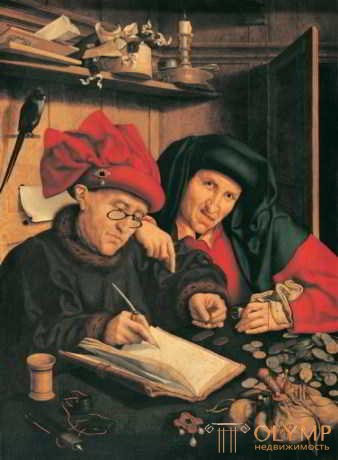
Fig. 77. “The tax collector” in Munich in 1542
3. Joachim Patinir
The patinir of Dinan (1490–1524), who became an Antwerp master in 1515, the first true landscape painter to be recognized as such by Dürer, developed alongside Bouts, David, and Quentin Massay. Still, his landscapes with trees, waters and houses, with rocks in the background, piled up on the rocks, he connected everywhere else with biblical events and did not give such organically developed and solid mood landscapes, like landscape watercolors of Durer or small oil paintings Altdorfer and drawings Huber. In some parts, the Patinir naturally and artistically observed and transmitted steep rocky cliffs, lush groups of trees, wide river views of their homeland, the valley of the upper Meuse; he depicted the leaves of the trees in an old-Dutch pattern in a grainy manner, in dots: however, it is so fantastic and without observing the perspective it piles up separate parts one on another, that his pictures of nature seem generally cluttered and unnatural. The main paintings with his signature are: the landscape in Madrid with the “Temptation of St. Anthony ”, now attributed to Quentin Maysysu, and the majestic landscape with the“ Baptism of the Lord ”of the Vienna Gallery. His signature also has a landscape with “Relaxing on the Road to Egypt”, his favorite addition to the landscape in Antwerp and from St. Jerome in Karlsruhe. In Berlin, besides the museum, his works are in the Kaufman collection; in other countries you can meet him in the main galleries of Madrid and Vienna.
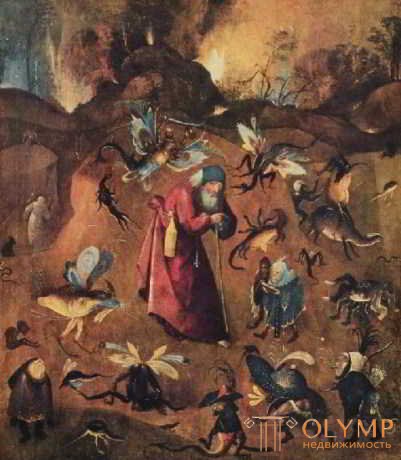
Fig. 78. The temptation of sv. Anthony
Next to Patinir, the second, almost contemporary landscape painter of the Maas valley, Henry (Gendrik) Bles or Met de Bles from Bouvigne (from 1480 to 1521 and later), nicknamed by the Italians Civetta for his owl sign, developed. It is certain that he was in Italy, less reliably, that he lived in Antwerp. A number of mediocre paintings of religious content, namely the Adoration of the Magi and their prototype with the signature Henricus Blesius of the Munich Pinakothek, really originated in Antwerp. Their landscape gave, judging by the motives and performance, adjacent to the landscapes of Patinir, although their brown tone is lighter. Yet the style of the figures of these paintings has too little in common with the style of the figures of the real landscapes of Civetta, an exceptional landscape painter of ancient sources, so that some doubts could not arise about the belonging of religious paintings of this Blesov group to the landscape painter Henry Met de Bles. The signature on the Munich picture, in any case, together with Voll, we consider genuine. Landscape painter with this name, compared with Patinir, firstly, has a more whitish color, then he is more confident, but more boring in composition, and finally softer, but more pompous in writing. However, he soon refuses to equip the landscape with religious figures and replaces them with the genre. The middle-aged time includes his landscapes with the Stations of the Cross of the Vienna Academy of Fine Arts and the Palazzo Doria in Rome, a large fantastic mountain landscape with rolling houses, blast furnaces and forges in the Uffizi and a landscape with rocks, a river and the (almost imperceptible) Samaritan of the Vienna Gallery owning a whole range of it pictures. On the transition to the last style is the landscape with the merchant and the monkeys in Dresden.
Jan Gossaart from Maubeuge (Mabuse, circa 1470–1541), commonly called Mabuse on behalf of his hometown, in Latin Malbodius, worked reliably in Antwerp. От Давида он перешел к Квентину, а затем в Италии (1508–1519), переработав влияние верхнеитальянских школ, развился в главного представителя римско-флорентийского стиля в Бельгии. В преобразовании языка форм у него принимают участие не только архитектура, но и фигуры и вся композиция, и потому своей холодной пластической, деланной резкостью его стиль кажется манерным и нехудожественным. Напротив того, более ранние произведения Мабюзе, например знаменитое с подписью его «Поклонение волхвов» в Касл-Ховарде, «Христос на Масличной горе» в Берлине, «Трехчастный алтарик Мадонны» в музее в Палермо, являются старонидерландскими произведениями с проникающим, жизненным языком форм и красками. Из картин позднего времени «Адам и Ева» в Гэмптон-Корте, «Евангелист Лука, пишущий Богородицу» в Рудольфинуме в Праге и «Мадонны» в Мадриде, Мюнхене и Париже при всем техническом искусстве отличаются уже намеренной холодностью форм и тонов его итальянизма; мифологические картины этой манеры, вроде «Геркулеса и Деяниры» у Кука в Ричмонде (1517), «Нептуна и Амфитриты» в Берлине и «Данаи» в Мюнхене (1527) тем невыносимее, что все еще стремятся соединить совершенно реалистические головы с холодной пластикой тел. Портреты Мабузе в Берлине, Париже и Лондоне показывают его, однако, с лучшей стороны. Все-таки портретная живопись всегда возвращается к природе.
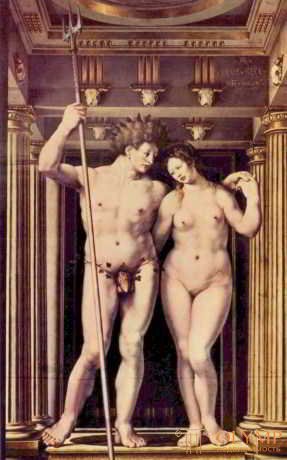
Fig. 79. "Neptune and Amphitrite" in Berlin
A related master who developed under the influences of Quentin, Patinir and Mabuse, was Jos van Kleve the Elder (c. 1485–1540), in 1511 the Amsterdam master, who in any case visited Italy. After the studies of Kemmerer, Firmenich-Richartz, Usti, Gluck, Gulin and others, it can be considered almost completely established that the prolific, beautiful and handsome master of the Assumption of the Virgin, known by this name for his two images with this plot in Cologne (1515) and in Munich, none other than this Jos van Kleve the Elder, although Fohl recognizes only the Munich image behind him. Scheubler did a great service by comparing his work. These paintings of his brush, as well as other earlier ones, for all their Low German pleasures and simplicity, are already touched by the first influences of the Renaissance. The main works of his middle age, when he combined the freshness of a drawing with warm colors and a smooth brush, this is the noble church altar of the Madonna with Cherries in Vienna, the small Adoration of the Magi in Dresden, the magnificent Madonna in Inns Golla near Liverpool and The Crucifixion by Weber in Hamburg. They are distinguished by the rich, but only half-expressing forms of the Renaissance built with playing sculpted cupids and beautiful landscapes, which continue the more balanced manner of Patinir. His later manner, which is colder only in some plastic figures, and, compared to Mabuse, is softer and more gentle in modeling, is represented by the large “Adoration of the Magi” in Dresden, the image of “Crying over Christ” in the Louvre and at the Shtedele Institute, the Altar of the Three Magi "In Naples and the" Holy Family "at the Palazzo Balbi in Genoa. His gently and evenly painted portraits in the galleries of Berlin, Dresden, Cologne, Kassel and Madrid and the most beautiful portrait of the Kaufman collection in Berlin among them are also known to have been reputed for the most part under other names. Quentin Massys is even more strongly influenced than the Master of the Assumption of the Virgin by the master of Frankfurt, studied by Weizsäcker, with his main picture of the altar Frankfurt, studied by Weizsäcker, with his main picture of the altar's Crucifix of the Shtedelevsky Institute, and the master of the Saint Blood ”in Bruges; Weber Gallery in Hamburg has the "Altar of the Virgin Mary" of his work.
4. Brussels School
Turning to Brussels, we meet here already in the first decades of the century of an excellent local master, Barend van Orley (died in 1542), who, as they say, finished his education under the guidance of Raphael in Rome, although at the same time it is impossible to prove his stay in Italy. The artist of the XV century at the beginning, about 1520, under the influence of Raphael, Dürer and Mabuse, goes over to Romanism and is itself the most significant representative of him in the Netherlands. Even thirty years ago, Alphonse Waters showed, and recently Friedlander again thoroughly confirmed that at first he devoted himself mainly to ancient painting, and subsequently with cloth and glass carpets on a large scale. Not only the Hunting of Maximilian of the Louvre, but also the Life of Abraham in Hampton-Court and Madrid, the Battle of Pavia in Naples and some of the most beautiful paintings on the glass of the Brussels Cathedral were made on his cartons.
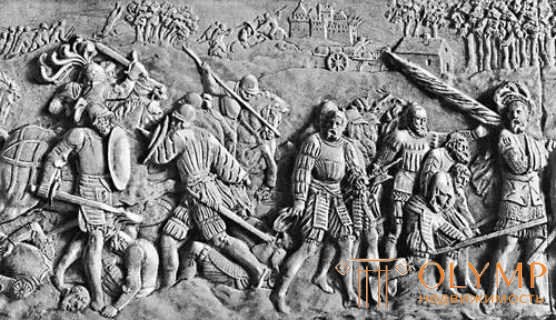
Fig. 80. Battle of Pavia
Friedländer considers the Altar of the Apostles to be the earliest remaining altarpiece, the middle part of which with events from the lives of the apostles Thomas and Matthew belongs to the Vienna Gallery, and the casement is Brussels. He relates it to 1512. The altar sv. The Walburgi in the Turin Gallery, decorated in pure Gothic style, imbued with the same old-Flemish spirit, was begun only in 1515, and completed in 1520. Almost simultaneous altar with the image of the Sermons of St. Norbert in Munich already gives a Renaissance architecture, of course, poorly understood. Among his excellent, simple and truthful portraits, his signature has a portrait of Dr. Celle in 1519 in Brussels. The Orleans' Italianism manifests itself completely and immediately, albeit in soft processing, in the Testaments of Job (1521) of the Brussels Museum, in the recently acquired Madonna of the Louvre (1521), which corresponds to a similar picture of 1522 in the possession of a private person in Spain, as well as in the altar of “Charity of the Poor” of the Antwerp Museum, depicting the Last Judgment and works of mercy. We look at the altar with the Crucifix in Rotterdam as a piece of art later, and the most mature work of the master is, together with Friedländer, the portrait of Karondel in Munich, attributed to Mosesis. The altarpieces of the end of his life turned out to be rather mediocre works of his workshop.
Peter Kok van Alst (1502–1550), a “Flemish Vitruvius” traveler in Italy, who lived in Antwerp before moving to Brussels, was a student of Orlais. As a painter in the spirit of Orlais, we know him from the "Last Supper" in the Brussels Museum. In the same collection there are paintings by artists related to Orlais, Cornelis and Jan van Koninkslogo (1489–1554), in which there are no traces of any forward development seen, however, in the paintings by the Brussels landscape painter Luka-Hassel van Helmont (1496–1561 ) The Vienna Gallery and the Weber collection in Hamburg, which followed the direction of Civetta. No landscapes of this school from the river Meuse, however, can match the immediacy of perception and the colorful expression with the landscapes of Altdorfer and the Danube School.
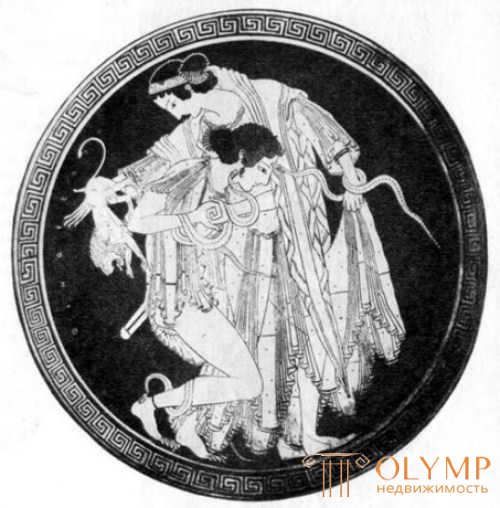
Fig. 81. Flemish Vitruvius
Together with Gulin, we could also include the “masters of female semi-figures” in the Brussels school, in which Vikgoff assumes as much as Jean Clouet, the Dutch court painter of the French king Francis I. The talented Viennese scientist really gave the possibility that he worked in France, but that he was Jean Clouet remains more than doubtful. His reading or music-making ladies, usually written separately or in several half-figures among the richly decorated surroundings, have been preserved in many collections. Wikgoff recently singled out and revised them. The most beautiful three ladies involved in music, the gallery of Harrach in Vienna. In the sense of refinement of the everyday genre, these images, connecting with noble postures and calm revival, simple painting and hot colors, take a new note in the history of painting.
In Bruges, the immediate successors of David immediately draw attention to themselves. They include Adrian Isenbrandt, master of the Bruges city guild since 1510, who died in 1551. Together with Gulin, we may have the right to see his works in those paintings that Vaagen erroneously attributed to the Gaarlem master Jan Mostart. Lacking great imagination in his calm, mood-filled landscapes, simply and clearly painted figures, in the pomp of his deep tones with not quite pure bodily tones, he brings David's style to more delicate charm. His great Adoration of the Magi in the church of the Virgin Mary in Lübeck bears the date of 1581, and the Grieving Mother of God in the Church of Our Lady in Bruges is written at least ten years later. Of the very often attributed to him paintings, Gulin identified some, for example, “The Appearance of the Madonna” (“Deipara Virgo”) of the Antwerp Museum, and attributed them to Ambrosius Benson (died about 1550), who became the master of Bruges in 1519.
The national direction opposite to Quentin's art, the style of which is opposed to Italian influences, is presented by Jan Provost from Mons, who settled in Bruges around 1494 and died here in 1529, with his later only authentic paintings. , for example, by the Last Judgment in 1525 in the museum in Bruges, by the other Last Judgment by Weber in Hamburg and by the Madonna in glory in St. Petersburg. On the contrary, Lancelot Blondel (1496–1561), whose paintings stand out for their rich ornamentation made in brown tones with gold and cold forms of figures, floated completely along the course of the Renaissance. The altar image of 1523 with the lives of Saints Kozma and Damian in the church of Sts. Jacob gives an example of his early, still uneven style, and the mature later style is expressed in the altar of Madonna in 1545 in the cathedral and in the painting with the apostle Luke of the same year in the Museum in Bruges. Blondel was followed by less advanced Clais, of whom only Peter Klais the Elder (1500–1576), an excellent self-portrait in 1560 from the National Gallery in Christiania, goes beyond the first half of the century.
5. Art of the Northern Netherlands
The most significant painters of the first half of the XVI century, studied in recent times by Dulberg, gathered in the northern Netherlands, especially in Leiden, Utrecht, Amsterdam and Haarlem. The main movement for the first time with a new force manifested itself in Leiden. The master who entered new ways was Cornelis Engebrechts (1468–1533). His two main works in the Leiden Museum are the altar with the Crucifixion (circa 1509), the Sacrifice of Abraham and the Bronze Serpent on the inner sides, the Laudation and Groom of the Savior with a crown of thorns on the outer sides of the wings and the altar with Weeping over the Body of Christ (about 1526). ) with small scenes of the Passion of Christ on its sides and with magnificent doors with donors and saints. In both works, the majestic passion of a lively story, successfully introduced into the region of a rich landscape, is majestic. In Crucifixion, the transmission of the body is magnificent, despite the brown-gray shadows and the strong combined effect of individual sparkling colors; pathetic movements are still somewhat theatrical; The elongated, elongated figures with their small heads, long legs, thick calves and thin ankles seem to have only a distant relationship with nature; his male faces with long noses, female types with a high upper part of the face and a strikingly short lower part have no similarity for themselves. The pictures of the altar with Weeping over the Body of Christ are less sharply painted and softer and more toned in the brown scale. All the architecture in these paintings is, of course, Late Gothic, and all the figures, in the absence of any true correlation at all, aspire from the connection of XV to the freedom of the XVI century. Enumerate numerous small pictures of other collections, recently attributed by Engebrechtsen to the best experts, we cannot here. Yet among them is the small “Temptation of St. Anthony "in Dresden!
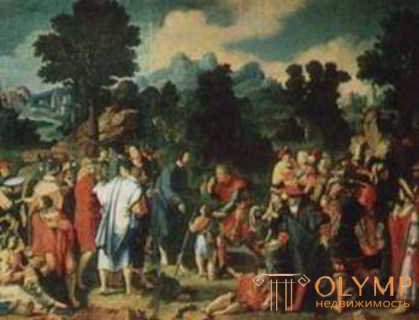
Fig. 82. Luke van Leiden
The main student of Engebrehts was the famous son of Guy Jacobs, Luca van Leyden (from 1494 or earlier to 1533), speaking not only as a painter, but also as a carver and engraver of his compositions and draftsman for wood engraving, in which he can be compared with Durer . He left 170 engravings on copper, 9 etchings and 16 engravings on wood. The artistic development of his appears most clearly in engravings on copper, isolated Volbert. After the experiments of an early time, for example, the sleeping Mohammed (1508), already in the Conversion of Saul (1509) and in the Temptation of St.. Anthony with the figures stretched out like Engebrechts, the young master moves to a clearer language of forms and a more regular grouping against the background of rich landscapes. Already in 1510, on sheets with “Adam and Eve in Exile”, “Esse Homo”, “Milkmaid”, he reached the amazing height of a mature national style, inner life and delicate technical finish, then on sheets with “Pentrofrim” (1512) and He tries to convey “Piram” (1514) a passionate feeling, and in the next period such engravings as “Carrying the Cross” (1515), the large “Calvary” (1517) and “Christ as a gardener” (1519) become under the banner of Dürer. The influence of Durer on Luke reaches its highest point in the portrait of Emperor Maximilian (1520), in the more extensive series of the Passion of Christ (1521), in "The Dentist" (1523) and in "The Surgeon" (1524). But around 1525, under the influence of Mabuse, Luke openly turned to the Roman school of Marcantonio, clearly translucent not only in forms, but also in the content of his graceful ornamental engravings (1527 and 1528), in Venus and Amur (1528), in the series of the Fall of Man (1529) and "Venus and Mars" (1530). The area of his plots was as diverse as the plots of Dürer; but in spirit, strength and penetration Luke cannot compare with the great Nuremberg. His oil paintings that have come down to us confirm this impression. For fresh and cheerful in youthful time colors are: "Players" of Count Pembroke in Wilton-Goes and "Chess Players" in Berlin. Around 1515, its magnificent in colors, the Berlin Madonna, slightly touched by the trends of the Renaissance, arose. The spirit of the Renaissance is more strongly felt in the “Madonna” and “Annunciation” in 1522 in Munich. The best works of the Italian late-time direction are his famous Last Judgment (1526) in the Leiden Museum, then “Moses exuding water from the cliffs” of the German Museum (1527), an important picture of mannered, long figures and cold in color, and The three parts are a picture depicting the healing of the Jericho Blind (1531) in Petersburg. The average picture of the Last Judgment in Leiden represents Christ in the distance, without Mary and John, on the rainbow, under him, to the right and left, the apostles, looking curiously from behind the clouds, and on the earth with a slightly curved horizon, the Resurrection of the Dead. The figures are not crowded in a tangle, but in the deliberately Italian spirit they are clearly and definitely scattered through the picture alone or in groups, but involuntarily expressed in their own language of forms. Each naked figure tends to express itself and stands out in a special, arbitrary body tone among the neighboring figures. With all the calculated forms, the majestic work was quite independently conceived and executed. It surpasses almost all simultaneous works of northern painting with its picturesque, transmission of the atmosphere’s life, delicate harmony of tones and easy smooth writing.
In Amsterdam, in the first decades of the century, master Jacob Cornelis van Ostzazanen (1470–1533) flourished, using architectural forms of the Renaissance in his later paintings, but essentially remaining his imagination as a strict and dry artist in the Old Dutch style. The assumption that he is dependent on Engebrehts is devoid of obviousness. His figures have high foreheads and a small lower part of the face. He writes out each hair separately, and he performs firmly and diligently the foreground circumferences. He juicy paints and diligently, although a few sharply models in light, rich colors. His engravings on copper were already known by Bartsch and Passavan, and for the first time he was compared by Scheubler to paintings. His “Saul at the Endor's Sorceress” in Rijksmuseum appeared in 1560, and the male portrait of the same collection in 1533. Ostzazanen's paintings are also found in Kassel, Berlin, Antwerp, Naples, Vienna and The Hague. The combination of external pomp with the warmth of internal feeling is their peculiar attractiveness.

Fig. 83. Saul at the Endor's sorceress
In Utrecht, Jan van Sorel (1495–1562) was famous, the master considered to be the real head of Italianism in Holland. He was a student of Jacob Cornelis in Amsterdam, Mabuse in Antwerp, and then traveled to Germany and Italy. His early manner with the German influence of Durer shows a wonderful altar with the Holy Family of 1520 in Obervellach, full of direct observation. The Middle Italian style is represented by “Rest on the Path to Egypt” in the Utrecht Museum and Dulberg recalls Dosso Dossi. Of his later, cold, deliberately imitating Roman school of paintings associated by Usti, Scheubler and Bode, still painted in Dutch with brownish shadows, the Crucifixion (1530) in the Bonn Provincial Museum bears the sign of the name of Sorel. Mood-infused in the landscape of the “Baptism of the Lord” at the Gaarlem Museum is certified by van Mander. With the rest of the pictures of this manner can best be found in Utrecht and in Amsterdam. His altar with Christ as the gardener at Weber in Hamburg is also excellent. Still more alive are his portraits, for example, Agatha van Shongoven (1529) in the Doria Gallery in Rome. The paintings on the tree of the Gaarlem and Utrecht museums, depicting Gaarlem and Utrecht pilgrims to the Holy Land in the form of half-figures, one after the other, are steps leading up to portrait groups of the great Dutch painting. Apparently, Shorel also owns a family portrait of the Kassel Gallery, which makes such a strong impression.
6. Jan Mostart
Что бы оставить комментарий войдите
Комментарии (0)